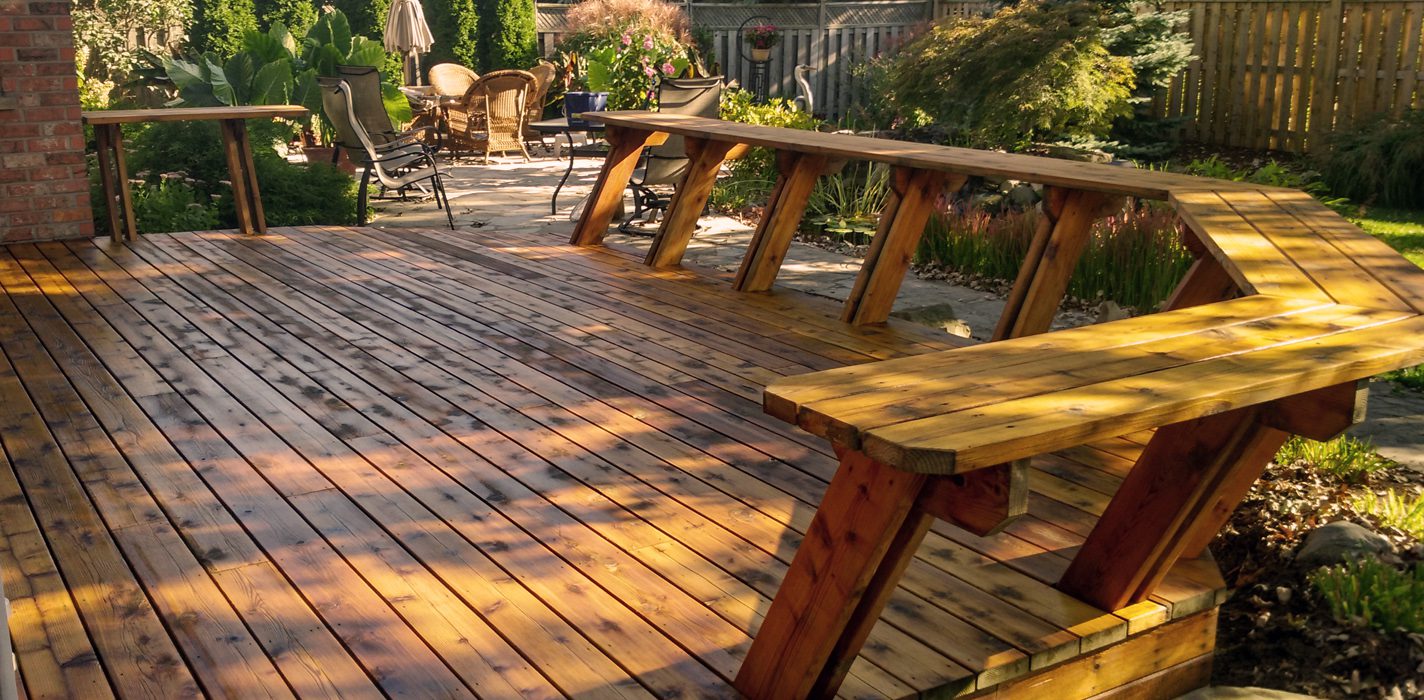Changing your deck into a dazzling outside desert garden requires something beyond a new layer of paint. Master Decker deck staining is a careful cycle that consolidates expertise, skill, and top notch items to improve the life span and presence of your deck. In this exhaustive aide, we will dive into the fundamental parts of deck staining, from readiness and application to support and investigating.
Understanding Deck Staining
Deck staining is a vital stage in safeguarding and improving the tasteful allure of your outside wooden designs. Not at all like work of art, which covers the wood with a strong layer, staining infiltrates the wood grain, offering a more regular look while giving security against the components. The Master Decker approach centers around using better procedures and materials than accomplish perfect outcomes.
Picking the Right Stain
Choosing the suitable stain for your deck is major to accomplishing the ideal result. There are different sorts of stains accessible, each with unmistakable attributes.
Oil-Based Stains are prestigious for their profound infiltration and rich variety improvement. They are great for softwoods like pine and cedar, offering astounding solidness and protection from dampness. These colors can likewise feature the normal grain of the wood, giving a warm, shine rich completion.
Water-Based Stains offer a speedier drying time and are less inclined to blurring after some time. They are a famous decision for hardwoods and are known for their simplicity of use and low scent. Water-based stains likewise give an expansive scope of varieties, taking into consideration more noteworthy customization of your deck’s appearance.
Hazy versus Strong Colors: Hazy colors permit the wood’s normal grain to appear through while adding an unpretentious tint. They offer a harmony between variety improvement and grain perceivability. Then again, strong colors give a more uniform tone and totally dark the wood grain, which can be great for decks with flaws or more established wood.
Setting up Your Deck for Staining
Legitimate planning is essential to accomplishing an expert completion. Start by completely cleaning the deck to eliminate soil, mold, and old stain. A deck cleaner or strain washer can be viable devices for this undertaking. Guarantee that the deck is totally dry prior to continuing.
Sanding is one more fundamental stage in arrangement. It assists with smoothing the wood surface and open up the grain to more readily assimilate the color. Utilize a sander or sandpaper with a medium coarseness, and consistently sand toward the wood grain.
Fix any harm to the deck prior to staining. Supplant any bad or harmed sheets and secure free nails. This guarantees that the stain will stick appropriately and gives a more uniform completion.
Applying the Stain
Before application, mix the stain completely to guarantee an even appropriation of colors and added substances. Utilize a brush, roller, or sprayer to apply the stain, working in little segments to keep a wet edge and forestall lap marks.
While applying the stain, adhere to the producer’s guidelines for the best outcomes. Normally, you ought to apply the stain in slim, even covers and abstain from over-applying, which can prompt a smeared appearance. For a more extraordinary variety, a subsequent coat might be essential. Continuously permit the main coat to dry totally prior to applying the second.

Work with the grain of the wood and guarantee that all regions are covered equitably. Be wary around edges and corners to stay away from trickles and runs. For huge regions, think about involving a sprayer for a more uniform application, however be ready to back-brush to work the color into the wood.
Relieving and Support
Subsequent to staining, it is fundamental to permit the deck to appropriately fix. Abstain from strolling on the deck or putting any furniture until the color has completely dried and restored. This commonly requires 24 to 48 hours, yet check the maker’s suggestions for explicit drying times.
To keep up with the magnificence and life span of your stained deck, perform ordinary cleaning and assessment. Utilize a delicate cleaner and keep away from brutal synthetic substances that can strip the stain. Review the deck yearly for indications of wear and consider applying a support layer of stain each 2 to 3 years, contingent upon the degree of openness to the components and traffic.
Investigating Normal Issues
Indeed, even with cautious application, issues can emerge. Smudged or lopsided staining can happen because of changing wood assimilation rates or ill-advised application strategies. Arrangement: Sand the impacted regions and reapply the stain, guaranteeing even inclusion.
Stripping or chipping frequently results from ill-advised surface planning or applying the stain over a formerly applied finish. Arrangement: Strip the old stain, clean the surface, and reapply the stain as coordinated.
Blurring is a typical issue, especially with lighter tones presented to weighty daylight. Arrangement: Pick a stain with high UV obstruction for future applications to limit blurring.
Conclusion
Master Decker deck staining is a groundbreaking interaction that improves both the appearance and strength of your outside deck. By choosing the right stain, appropriately getting ready and applying it, and performing ordinary support, you can guarantee a dependable and wonderful completion for your deck. With these master tips and procedures, you are exceptional to accomplish remarkable outcomes and partake in your open air space without limit.




